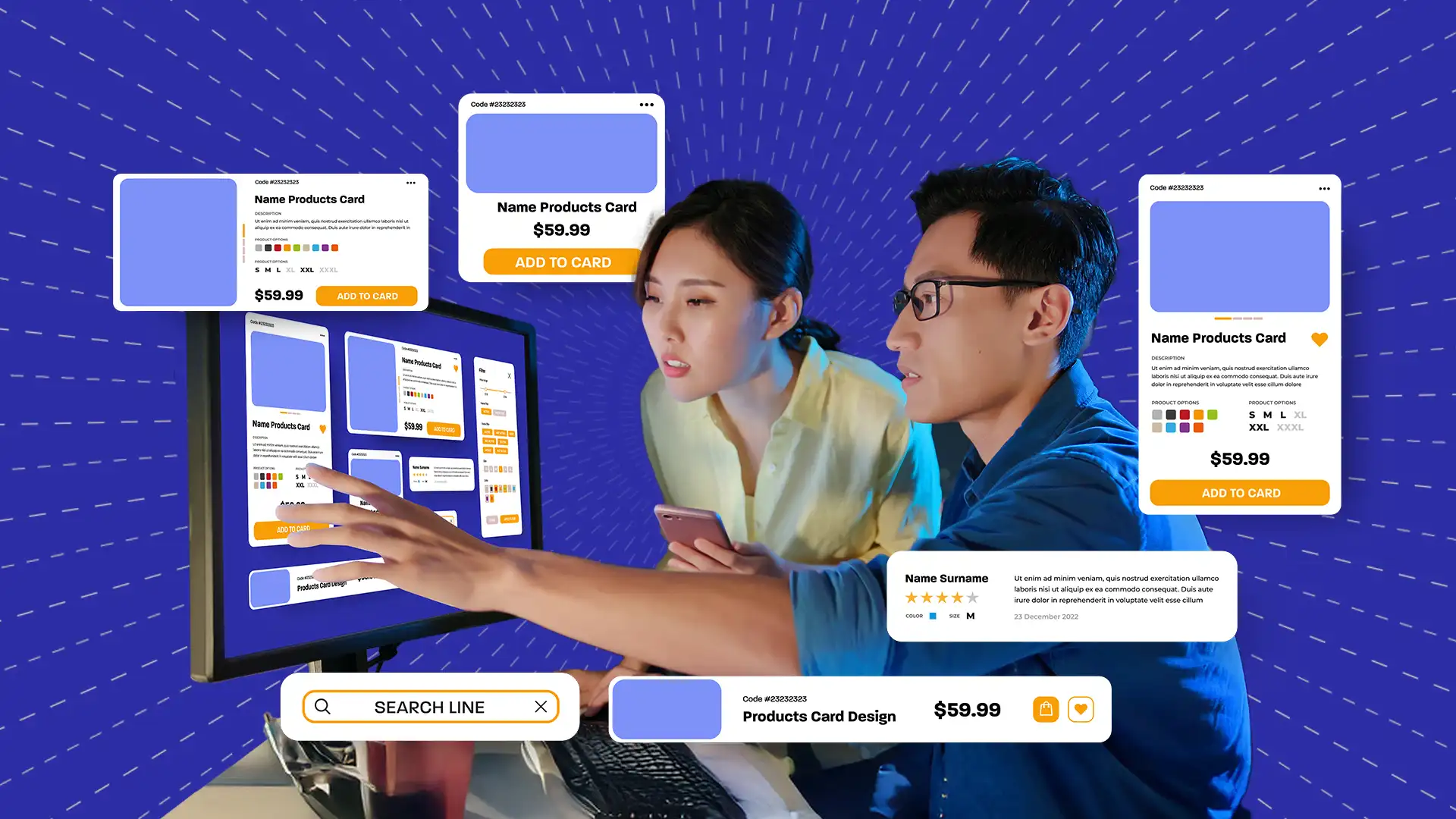Let’s face it: building digital products can get messy. Especially when teams grow, projects scale, or you’re trying to maintain a consistent look and feel across multiple platforms – a website, a mobile app, maybe even internal tools. Suddenly, that specific shade of blue your brand uses starts appearing in five slightly different hex codes. Spacing becomes inconsistent, font sizes vary wildly, and the user experience starts to feel disjointed. It’s frustrating for designers, developers, and ultimately, for the end-users.
This is where the concept of Design Tokens comes riding in like a well-organized cavalry. It sounds a bit technical, maybe even abstract, but stick with me. At its core, it’s a wonderfully simple idea that brings immense power to streamline your design and development workflow, ensuring that much-needed consistency we all crave.
Think of design tokens as the single source of truth for all the foundational visual elements of your user interface (UI). Instead of scattering specific values like hex codes (#3498db), pixel sizes (16px), or font weights (bold) directly throughout your design files and codebases, you define them once as named entities – the “tokens.”
So, What Are Design Tokens, Really? (The Simple Analogy)
Imagine you’re baking a cake using a very detailed recipe. The recipe calls for “1 cup of our signature flour blend” and “2 tablespoons of premium cocoa powder.” You wouldn’t just grab any flour or cocoa; you use the specific ones defined by the recipe.
Design tokens work similarly. They are named containers for your core design decisions. Instead of a designer handing off a design saying “use blue #3498db for primary buttons,” they say “use color-primary-action.”
That token, color-primary-action, holds the value #3498db.
Why the extra step? Because now, color-primary-action becomes the universal language.
- Designers use color-primary-action in their Figma, Sketch, or Adobe XD files.
- Developers reference color-primary-action in their CSS, Swift, Kotlin, or JavaScript code.
If, down the line, the brand decides to update its primary blue, you change the value of color-primary-action in one central place. Magically (or rather, systematically), that change propagates everywhere the token is used – across all design files and all codebases that reference it. No more hunting down every instance of #3498db.
Why Bother? The Tangible Benefits of Using Design Tokens
Okay, the concept is neat, but what’s the real-world payoff? Why should your IT solutions company – and your clients – care about implementing design tokens? The benefits are substantial:
- Rock-Solid Consistency: This is the headline act. Tokens enforce uniformity across all platforms and products. Buttons look the same, spacing feels intentional, typography is harmonious. This builds brand recognition, user trust, and a more professional, polished feel.
- Boosted Efficiency: Think of the time saved! Designers aren’t constantly re-specifying values. Developers aren’t guessing or digging through style guides for hex codes. The handoff process becomes smoother. Updates that used to take days or weeks can potentially be done in hours.
- Effortless Scalability: As projects grow or you add new features or platforms, tokens make it manageable. Adding a new component? It naturally inherits the established visual language through tokens. Expanding to a new operating system? Tokens can be translated into platform-specific formats.
- Improved Collaboration: Tokens create a shared vocabulary between designers and developers. Misunderstandings about specific values decrease because everyone refers to the same named entity. It bridges the gap, fostering a more collaborative and less error-prone environment. For insights on design-system collaboration, explore strategies from industry leaders.
- Simplified Maintenance and Rebranding: Need to refresh the brand? Change the token values. Need to adjust spacing for better accessibility? Update the spacing tokens. Maintenance becomes systematic rather than a painstaking manual overhaul. This agility is invaluable in today’s fast-paced digital landscape.
- Platform Agnosticism: A core strength! The concept of color-primary-action is universal. The value (#3498db) can be automatically transformed into whatever format is needed: a hex code for CSS, a UIColor definition for iOS, an XML color resource for Android. You define it once; tools can handle the translation.
Breaking Down the Tokens: Common Categories
Design tokens aren’t just about colors. They encompass all the fundamental building blocks of your visual language:
- Colors: color-primary, color-secondary, color-text-default, color-background-page, color-border-subtle, color-feedback-error.
- Typography: font-family-base, font-size-heading-1, font-size-body, font-weight-bold, line-height-tight, letter-spacing-condensed.
- Spacing: spacing-xs, spacing-small, spacing-medium, spacing-large, spacing-xl (often used for padding, margins, gaps).
- Sizing: size-icon-small, size-button-height, size-container-max-width.
- Border Radius: border-radius-small, border-radius-medium, border-radius-pill.
- Shadows: shadow-near, shadow-medium, shadow-far.
- Time/Animation: duration-short, duration-medium, easing-standard.
For inspiration, review Material Design’s tokens system to see how Google structures its design language.
You can get as granular or as high-level as your system requires. The key is naming them meaningfully and consistently.
How Do They Work in Practice? Bridging Design and Code
This is where the magic truly connects for an IT Solutions provider. The process usually looks something like this:
- Definition: Design tokens are defined in a central, technology-agnostic format, often JSON or YAML files. This is the “single source of truth.” Example:
JSON
{
“color”: {
“primary”: {
“action”: { “value”: “#3498db” }
},
“text”: {
“default”: { “value”: “#333333” }
}
},
“spacing”: {
“medium”: { “value”: “16px” }
}
}
- Transformation: Tools like Style Dictionary or Specify automatically transform these files into platform-specific formats:
- For Web: CSS Custom Properties (–color-primary-action: #3498db;), Sass/Less variables.
- For iOS: Swift properties (let colorPrimaryAction = UIColor(…)), JSON.
- For Android: XML resources (<color name=”color_primary_action”>#3498DB</color>), Kotlin/Java constants.
- Integration: Designers use plugins (like Figma Tokens) that sync with the token definitions, allowing them to design using the named tokens directly. Developers import the generated code files into their projects and reference the token variables instead of hardcoding values.
The IT Solutions Advantage: Delivering Better Products
For an IT Solutions company, embracing design tokens isn’t just an internal efficiency gain; it’s a direct benefit to your clients.
- Faster Time-to-Market: Streamlined workflows mean quicker development cycles.
- Higher Quality Products: Consistency leads to a more professional and trustworthy user experience.
- Reduced Long-Term Costs: Easier maintenance and updates save clients money over the product’s lifecycle.
- Stronger Brand Cohesion: Ensure the client’s brand identity is accurately and consistently represented across all digital touchpoints.
- Smoother Project Handoffs: Clearer communication and shared language between design and development teams lead to fewer errors and revisions.
By implementing design tokens, you demonstrate a mature, systematic approach to UI development, building confidence and delivering superior results.
Getting Started: It’s an Evolution
You don’t need to boil the ocean overnight. Start small. Audit your existing UI for common colors, fonts, and spacing. Define a core set of tokens. Integrate them into a pilot project. Use tools to automate the transformation. Gradually expand the system as you see the benefits.
Conclusion
Design tokens are more than just variables; they represent codified design decisions. They are the atomic units of your design system, the bedrock upon which consistent, scalable, and maintainable user interfaces are built. By simplifying the complex web of visual styles into a manageable, centralized system, design tokens empower teams to work faster, collaborate better, and ultimately, build higher-quality digital experiences. For any organization serious about digital product development, understanding and leveraging design tokens isn’t just a trend – it’s a fundamental step towards smarter, more efficient design and development.
Let’s build smarter campaigns together. Reach out to our team today.
Whether you’re starting from scratch or optimizing what you already have, we’ll help you turn great ideas into powerful, high-performing digital experiences.



